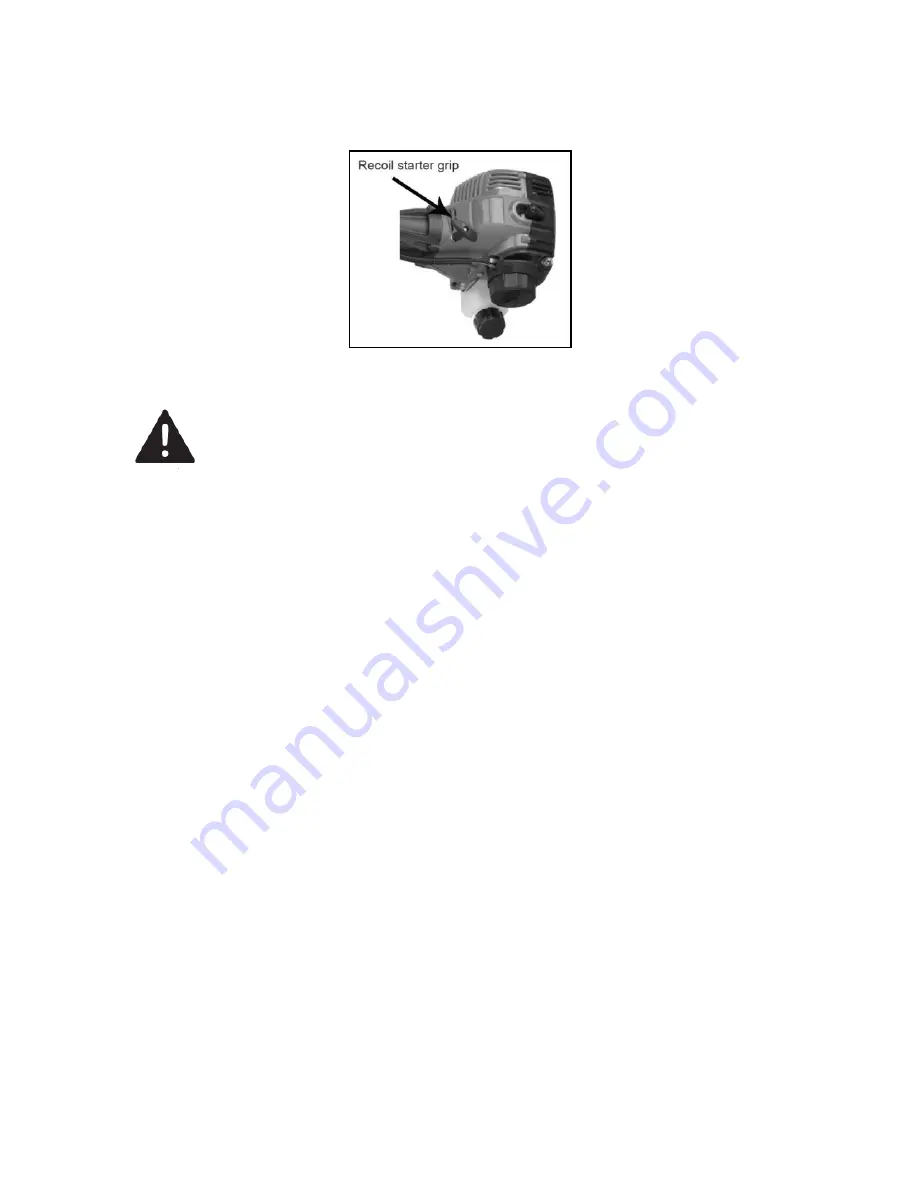
18
6.
Hold the equipment firmly with one hand on the shaft tube.
With the other hand, pull the
starter cable several times on the starter handle until the engine starts. Pull the recoil starter
grip slowly to engage the starter, and then give a short, quick pull.
Caution! Do not pull the starter cable out too far
– risk of breaking!
Warning!
Releasing the starting rope suddenly may allow the rope to whip
around and cause injury and/or damage the recoil starting mechanism.
When starting the engine, firmly grasp the recoil starter grip; do not
grasp the starter rope itself. Always control the rope as it rewinds into
the housing.
Note:
• Should the engine fail to start, do not try the recoil start many times with the choke lever to the
“START” position. This will cause the fuel to flood into the cylinder and make starting even
more difficult. In this case, set the choke lever to the “RUN” position. And then, repeat the
starting.
• After starting, vary the engine speed a few times, by operating the throttle lever to draw out
the remaining air in the carburetor.
7. Warming up
After starting the engine, run the engine at the idling speed (throttle lever position is fully
CLOSED) for a few minutes.
Notice:
Allow sufficient warm-up time to prevent engine damage and run the engine smoothly. The
engine should be run at idle speed for a few minutes to allow it to warm up before applying a
load. This will allow oil to reach engine parts, and allow piston clearance to reach design
specifications.















































